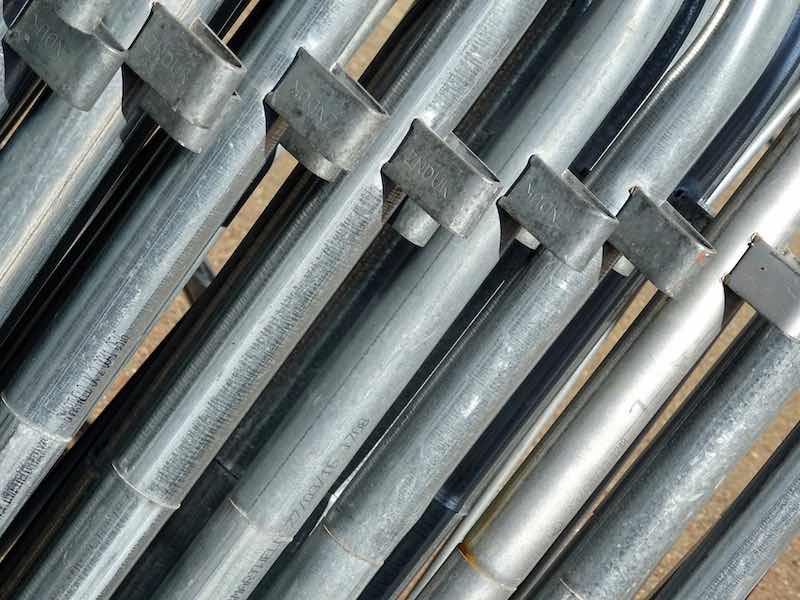For decades industry has used aluminum in the development and fabrication of a wide variety of products and finished goods.
 Stephen RudyAluminum is non toxic, and it is second to iron in metals use. World aluminum output in 2022 was 69 million metric tons. Aluminum is one of the world’s most abundant metals. It is mainly produced from bauxite, which is an enriched aluminum ore. Bauxite is most common in tropical and subtropical areas. These include Africa, West Indies, South America, and Australia. China and Russia along with Europe have some deposits. The USA has scattered small deposits.
Stephen RudyAluminum is non toxic, and it is second to iron in metals use. World aluminum output in 2022 was 69 million metric tons. Aluminum is one of the world’s most abundant metals. It is mainly produced from bauxite, which is an enriched aluminum ore. Bauxite is most common in tropical and subtropical areas. These include Africa, West Indies, South America, and Australia. China and Russia along with Europe have some deposits. The USA has scattered small deposits.
From mining, approximately 4 tons of bauxite produces 1 ton of aluminum. For example in 2019, worldwide mining of 347 million tons of bauxite ore, produced 62.9 million tons of aluminum.
Due to advanced and progressive recycling, three quarters of all aluminum ever made remain in use today.
Many Properties and Benefits
Aluminum has many properties and benefits that make it an outstanding material of choice. These include lightweight (approximately one-third of steel), exceptional reflectivity, high elasticity, tolerance to low temperatures (will not get brittle), excellent conductor of heat and electricity and readily worked and formed into many shapes and thin coils.
Aluminum is mixed with other metals to increase hardness of steel. Aluminum is an excellent conductor of electricity, cheaper than copper.
The metal finishing industry provides many treatments and finishes for aluminum in its many shapes, alloys and castings. These processes include electroplating, electroless deposition (EN), anodizing, pre-paint, chromating and oxidized coloring, to describe some of the most common.
It has been found to be of vital importance that aluminum alloy and casting designations be determined, so as to apply the correct chemical base treatments and conditioning, in the many processing cycles. Let us review some of these designations in a format that can be used for handy reference. Foremost, these designations also correspond to what products the aluminum alloys are fabricated to.
Aluminum Alloys
There is a four digit number for classifying alloys by the main element in the particular alloy, also referred to as a wrought alloy. This table, which could be familiar to many, holds an important identification key.
Wrought aluminum alloys
| First digit of alloy | Main element in alloy |
| 1XXX | At least 99% aluminum |
| 2XXX | Copper |
| 3XXX | Manganese |
| 4XXX | Silicon |
| 5XXX | Magnesium |
| 6XXX | Magnesium and silicon |
| 7XXX | Zinc |
The second number describes impurity limits. The last two numbers indicate the minimum aluminum content.
Cast aluminum alloys have a separate designation table.
Cast aluminum alloys
| First digit of alloy | Main element in alloy |
| 1XXX | At least 99% aluminum |
| 2XXX | Copper |
| 3XXX | Silicon and copper; possibly magnesium |
| 4XXX | Silicon |
| 5XXX | Magnesium |
| 6XXX | Unused series |
| 7XXX | Zinc |
| 8XXX | Tin |
| 9XXX | Other elements |
The first number refers to the main alloying element, added to the aluminum alloy. The second and third numbers are assigned to identify a specific alloy in the series. For example, the A356 designation identifies a modification to alloy 356.0. The number 3 corresponds to the copper and silicon-containing elements. The number 56 identifies the alloy within the 3XX.X series. The .0 indicates the material is a final shape casting.
Descriptions of the common aluminum alloy designations and their applications follow:
- 1100: Essentially pure aluminum. Excellent workability, as the material is soft and ductile. It is the most weldable aluminum alloy, but not heat treatable. Its excellent corrosion resistance makes it applicable to food and chemical processing.
- 2011: Excellent mechanical properties, making it the most free machining of the aluminum alloys. It is very good for parts that require heavy machining.
- 2014, 2017: Excellent machining and high strength.
- 2024: High strength and excellent fatigue resistance. Can be machined to a high finish. Poor corrosion resistance makes this material a good choice for anodizing. Heavy emphasis for this alloy in aircraft construction (structural components, fittings, hardware). It is also used in truck wheels and parts used in the transportation industry.
- 3003: The most widely used aluminum alloy. It is pure aluminum, to which is added manganese. This results in surpassing the strength of the 1100 series by approximately 20%. Excellent corrosion resistance. Popular applications include chemical equipment, construction materials (siding, awnings, trim) and cooking utensils.
- 5005: This alloy is similar to 3003, but is an overall improved version of it. It is a good alloy for anodizing.
- 5052: Excellent corrosion resistance, along with very high strength. It has many varied applications: food processing, transportation, marine, home appliances and cooking utensils.
- 5083, 5086: Excellent welding characteristics, very good forming properties and excellent corrosion resistance. Applications include heavy duty trucks and trailer assemblies, boat hulls and superstructures and missile containers.
- 6061: An economical alloy that has very good heat treatment characteristics. Good mechanical properties and corrosion resistance. Applications include truck bodies, automotive wheels and various structural components.
- 6063: Also called the architectural grade. It is an extrusion alloy with high tensile properties and very good corrosion resistance. It is an excellent choice for anodizing in clear or colored finishes. Applications include interior and exterior architecture items, doors, windows and frames.
- 7075: One of the highest strength aluminum alloys. It retains superior strength-to-weight ratio. Applications include materials for high strength requirements. Applications include aircraft and aerospace.
Heat treatable alloys are those that gain strength through heat treatment. 2000, 6000 and 7000 alloys are heat treatable. The 4000 series consist of heat treatable and non-heat treatable alloys. Temper designations identify the status of whether the particular alloy has been heat treated.
Temper Designations
- F: This is the as fabricated condition. There has been no thermal treatment or hardening procedure.
- O: Annealed. Heat treated to improve ductility and dimensional stability.
- H: Strain hardened. A cold working procedure was used to strengthen the material. Additional strain hardening may follow, reducing strength.
- W: Solution heat-treated. An unstable temper which applies to alloys that have been aged spontaneously at room temperature after solution heat treatment.
- T: Thermally treated. Alloys that have been heat treated with supplementary strain hardening. This produces a stable temper.
There are subdivisions of the above designations which identify additional treatments, such as annealing, cold working, stress relieving, artificial aging and lacquering.
Stephen F. Rudy, CEF, is president of Chem Analytic and has written extensively about the finishing industry. Visit www.chemanalytic.com or call him at 917-604-5001.



































